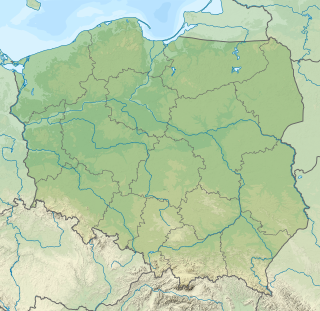Related Research Articles

UNESCO Biosphere Reserves are environment-protected scientific-research institutions of international status that are created with the intent for conservation in a natural state the most typical natural complexes of biosphere, conducting background ecological monitoring, studying of the surrounding natural environment, its changes under the activity of anthropogenic factors.
This article gives an overview of the woodland and scrub communities in the British National Vegetation Classification system.

The Corsican montane broadleaf and mixed forests ecoregion, in the Mediterranean forests, woodlands, and scrub biome, are on the island of Corsica. The ecoregion includes the high-altitude regions of Corsica's mountain ranges.
NVC community W2 is one of the woodland communities in the British National Vegetation Classification system. It is one of seven woodland communities in the NVC classed as "wet woodlands".
NVC community H1 is one of the heath communities in the British National Vegetation Classification system. It is one of five communities categorised as lowland dry heaths.
NVC community W8 is one of the woodland communities in the British National Vegetation Classification system. It is one of the six communities falling in the "mixed deciduous and oak/birch woodlands" group.
NVC community W9 is one of the woodland communities in the British National Vegetation Classification system. It is one of the six communities falling in the "mixed deciduous and oak/birch woodlands" group.
NVC community W10 is one of the woodland communities in the British National Vegetation Classification system. It is one of the six communities falling in the "mixed deciduous and oak/birch woodlands" group.
NVC community W11 is one of the woodland communities in the British National Vegetation Classification system. It is one of the six communities falling in the "mixed deciduous and oak/birch woodlands" group.
British NVC community MG3 is one of the mesotrophic grassland communities in the British National Vegetation Classification system. It is one of four such communities associated with well-drained permanent pastures and meadows.
British NVC community OV39 is one of the open habitat communities in the British National Vegetation Classification system. It is one of six communities of crevice, scree and spoil vegetation.

Deschampsia flexuosa, commonly known as wavy hair-grass, is a species of bunchgrass in the grass family widely distributed in Eurasia, Africa, South America, and North America.
NVC community CG6 is one of the calcicolous grassland communities in the British National Vegetation Classification system. It is one of four communities of rank, tussocky grassland associated with low levels of grazing, within the lowland calcicolous grassland group.
British NVC community OV37 is one of the open habitat communities in the British National Vegetation Classification system. It is one of six communities of crevice, scree and spoil vegetation.

Minwear Wood is a Site of Special Scientific Interest in Pembrokeshire, South Wales. It has been designated as a Site of Special Scientific Interest since January 1968 in an attempt to protect its fragile biological elements including ancient woodland of sessile oak with hazel and downy birch on the upper part of the Milford Haven estuary. The wood is structurally diverse and has scarce plants and epiphytic lichens. The site has an area of 13.69 hectares and is managed by Natural Resources Wales.
Celtic Rainforest is a colloquial term which refers to the temperate rainforest of the British Isles. These woodlands are also variously referred to as Atlantic rainforest, Upland Oakwoods, Atlantic Oakwoods or Western Oakwoods. Today, the Celtic Rainforest exists as small fragments of the temperate rainforest that once covered much of Ireland and the west coast of Great Britain. The majority of these fragments occur on steep-sided slopes above rivers and lakes which have avoided clearance and intensive grazing pressure. There are notable examples in Scotland on the islands and shores of Loch Maree, Loch Sunart, Loch Lomond, and one of the best preserved sites on the remote Taynish Peninsula in Argyll. In Wales, they occur on steep-sided riverine gorges in Snowdonia and Mid Wales. In England, there are examples in the Lake District, and steep-sided riverine and estuarine valleys in South West England, including the Fowey valley in Cornwall, and the valley of the river Dart which flows off Dartmoor, and has rainfall in excess of 2 metres per year.

Mylia taylorii, or Taylor's flapwort, is a species of leafy liverwort.
W17 may refer to:
Pillar and Ennerdale Fells is a Site of Special Scientific Interest (SSSI) in Ennerdale, Cumbria, England. Protected for its biological interest, the site is named after Pillar, which at 892 metres (2,927 ft) is the eighth-highest mountain in the Lake District, and other fells in the same range. The area is 425.25 ha.
References
- Rodwell, J. S. (1991) British Plant Communities Volume 1 - Woodlands and scrub ISBN 0-521-23558-8 (hardback), ISBN 0-521-62721-4 (paperback)